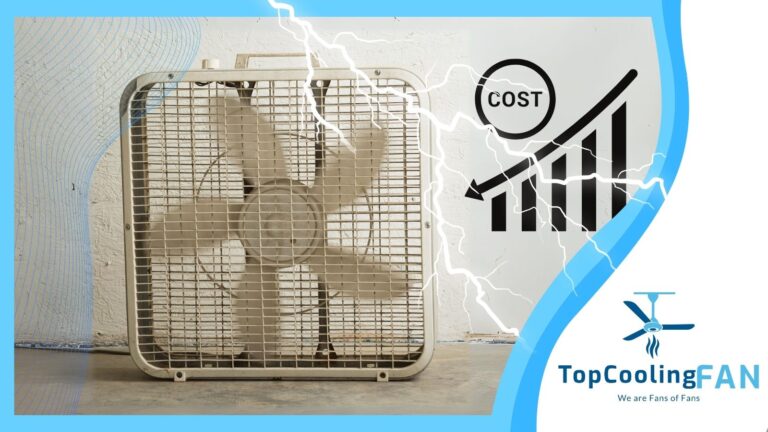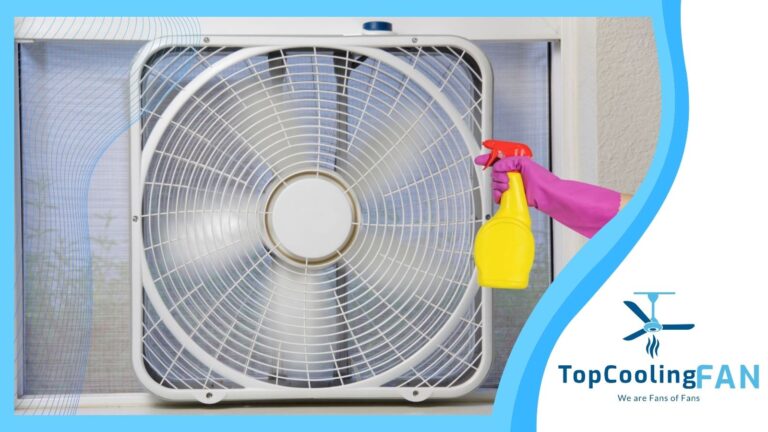Do Floor Fans Use a Lot of Electricity? Understanding Their Energy Consumption
When it comes to keeping cool, many people wonder: do floor fans use a lot of electricity? Understanding their energy consumption is crucial for making informed choices. Floor fans are popular for their effectiveness and affordability, but how do they fare in terms of power usage?

Online sources estimate that the power consumption of floor fans is around 25 watts on average. However, real-world tests show varied results, with some fans using up to 91 watts at full load and around 53 watts at the lowest speed.
For context, operating a floor fan continuously could consume as much electricity as a 100-watt incandescent bulb. Keep reading to dive deeper into the specifics of floor fan energy consumption and learn how to maximize efficiency without compromising comfort.
Do Floor Fans Use a Lot of Electricity? Understanding Their Energy Consumption
Floor fans are often praised for their energy efficiency, but do they really use a lot of electricity? Online sources estimate that the power consumption of floor fans is around 25 watts.
However, actual usage varies with speed settings. Tests have shown that a floor fan can use approximately 91 watts at full load and 53 watts at the lowest speed. These figures indicate that floor fans are relatively low in energy consumption compared to other household appliances.
To put this into perspective, consider a 100-watt incandescent bulb, which uses 100 watts of power. Even at its highest setting, a floor fan consumes slightly less electricity than a standard bulb.
Running a fan continuously can be as energy-consuming as leaving a 100-watt bulb on all day. While this might seem like a lot, it is significantly lower than the energy usage of air conditioning units, making floor fans a cost-effective cooling solution.
Comparing floor fan electricity usage to other common household items:
- 100-watt incandescent bulb: 100 watts
- Modern LED light bulb: 10 watts
- Refrigerator: 150-300 watts
- Microwave oven: 600-1200 watts
- Laptop: 50-100 watts
These comparisons highlight that floor fans are among the more energy-efficient appliances in a household. Their relatively low wattage makes them an attractive option for keeping cool without significantly increasing electricity bills.
Factors Influencing the Power Consumption of Floor Fans

Understanding the factors that influence the power consumption of floor fans is crucial for making energy-efficient choices. Several key elements, such as the fan model, blade size, speed settings, blade material, and operational hours, significantly affect how much electricity a floor fan uses.
Fan Model
Different fan models can vary widely in their energy consumption. High-power fans, designed for larger spaces or industrial use, typically consume more electricity than low-power fans intended for personal or small room usage.
For instance, a high-velocity fan might use more wattage to produce stronger airflow, whereas a compact desk fan will require less energy.
Blade Size
Blade size directly impacts power usage. Larger blades can move more air but require more energy to operate. A fan with a 16-inch blade will consume more electricity than one with a 10-inch blade, as the larger surface area demands a stronger motor to achieve the same rotational speed.
Speed Settings
The speed settings of a fan also play a crucial role in its energy consumption. Fans with variable speed settings allow users to adjust the airflow to their comfort level.
Operating a fan at a lower speed reduces its power usage significantly. For example, a fan might consume 91 watts at its highest setting but only 53 watts at the lowest speed.
Blade Material
Blade material can influence both efficiency and noise levels. Metal blade fans are generally stronger and can move more air, but they are noisier and consume more energy. In contrast, plastic blade fans are lighter and quieter, using less power while still providing adequate airflow.
Operational Hours
The duration for which a fan is used affects its overall energy consumption. Running a fan continuously for long periods will naturally increase electricity usage.
To optimize energy efficiency, it is advisable to use the fan only when needed and turn it off when not in use. This practice helps in reducing the total power consumption over time.
Comparing the Energy Consumption of Floor Fans and Other Appliances
How does the energy consumption of floor fans compare to air conditioners? Floor fans use significantly less electricity than air conditioning units. For instance, while a floor fan might consume around 91 watts at full load, an air conditioner can use between 500 to 1500 watts depending on the model and size.
Using a fan along with an air conditioner can increase overall power consumption by about 10%, but it can also help distribute cool air more efficiently, potentially allowing the AC unit to run less frequently.
Below is a table illustrating the average wattage of various household appliances to provide a clearer comparison:
| Appliance | Average Wattage | Use Case |
|---|---|---|
| Floor Fan | 25-91 | Cooling small to medium spaces |
| Air Conditioner | 500-1500 | Cooling large rooms or entire homes |
| Incandescent Bulb | 100 | Lighting |
| Refrigerator | 150-300 | Preserving food |
In summary, floor fans are relatively energy-efficient compared to other cooling devices like air conditioners. While they can’t replace an air conditioner in extremely hot conditions, they offer a cost-effective way to maintain a comfortable temperature in smaller spaces.
Tips for Reducing Electricity Usage with Floor Fans

Energy-saving practices are crucial for reducing the electricity costs associated with floor fans. Implementing these techniques can not only lower energy bills but also contribute to a more sustainable living environment.
By understanding and applying simple strategies, one can maximize the efficiency of floor fans without sacrificing comfort.
- Promote cross-ventilation: Position the fan near open windows or doors to enhance airflow throughout the room.
- Use lower speed settings: Operating the fan at a lower speed can significantly reduce power usage while still providing adequate cooling.
- Turn off and unplug: Always turn off and unplug the fan when it is not in use to eliminate standby power consumption.
- Regular maintenance: Clean the fan blades and grilles regularly to ensure efficient operation and prevent motor strain.
- Consider DC motors: Fans with DC motors consume up to 63% less energy compared to traditional AC motor fans.
- Optimize placement: Place the fan in a central location to distribute air evenly, reducing the need for higher speed settings.
Adopting these energy-saving practices ensures that floor fans operate more efficiently, leading to long-term benefits. Lower electricity bills and reduced environmental impact are just a few of the advantages. By making small adjustments in how floor fans are used and maintained, significant energy savings can be achieved.
Selecting Energy-Efficient Floor Fans
Energy efficiency is crucial when selecting a floor fan. It not only helps reduce electricity bills but also minimizes environmental impact. Choosing an energy-efficient fan ensures you get optimal cooling without excessive power consumption, making it a smart investment for the long term.
- DC motors: These motors are up to 63% more energy-efficient than traditional AC motors.
- Timer features: Timers allow fans to turn off automatically after a preset interval, preventing unnecessary energy usage.
- Variable speeds: Fans with adjustable speed settings enable you to use just the right amount of power needed, reducing energy consumption.
- Energy Star rating: Look for fans with an Energy Star rating, as they meet strict energy efficiency guidelines.
- Remote control: Remote controls can help you turn off the fan without needing to leave your seat, ensuring it is only on when needed.
Fans equipped with these features can significantly reduce energy consumption. For example, DC motors use less power while providing the same airflow as traditional motors. Timer features prevent fans from running longer than necessary, while variable speeds allow for power adjustment based on cooling needs.
Energy Star-rated fans have been tested for efficiency, ensuring lower electricity usage. Remote controls add convenience, allowing users to manage the fan’s operation easily. By selecting fans with these characteristics, you can achieve substantial energy savings and contribute to a more sustainable lifestyle.
Understanding and managing electricity usage is crucial for making informed decisions about home cooling solutions. So, do floor fans use a lot of electricity?
The answer depends on the fan’s model, blade size, speed settings, blade material, and operational hours. While floor fans are generally more energy-efficient compared to air conditioners, their power consumption can still add up if not used wisely.
By selecting energy-efficient models, using lower speed settings, and leveraging energy-saving techniques, one can enjoy the cooling benefits of a floor fan while minimizing electricity costs.
FAQ
Do floor fans use a lot of electricity?
Floor fans typically use between 25 to 91 watts, depending on the model and speed setting. This is comparable to a 100-watt incandescent bulb, making them relatively low in energy consumption.
How much electricity does a standing fan use?
A standing fan generally uses between 50 to 100 watts, depending on the speed setting and the specific model. At higher speeds, the power consumption will be closer to 100 watts.
How much electricity does a fan use per hour?
A fan uses 25 to 100 watts per hour based on the type and speed setting. Running at higher speeds increases electricity use, but averages around 70 watts per hour.
How much electricity does a ceiling fan use in 24 hours?
A ceiling fan running at medium speed uses approximately 50-75 watts per hour. Over 24 hours, this totals 1.2 to 1.8 kWh, which is modest compared to other appliances.
How much does it cost to run a fan 24/7?
Running a fan continuously uses roughly 1.5 to 2.4 kWh per day. At an average electricity rate of $0.12 per kWh, the cost is about $0.18 to $0.29 daily, or $5.40 to $8.70 monthly.
How many watts does a standing fan use?
A standing fan typically uses between 50 to 100 watts. The exact wattage depends on the speed setting and specific model of the fan used.
Do fans take up a lot of electricity?
Fans are relatively energy-efficient, using between 25 to 100 watts. They consume less electricity compared to air conditioners, making them a cost-effective cooling option.
Does a floor-standing fan use a lot of electricity?
A floor-standing fan uses between 50 to 100 watts. While this is higher than smaller fans, it is still significantly less than air conditioning units.
Do ceiling fans or floor fans use more electricity?
Ceiling fans generally use less electricity, roughly 50-75 watts, compared to floor fans, which can use between 50 to 100 watts. Ceiling fans are more efficient for larger spaces.


